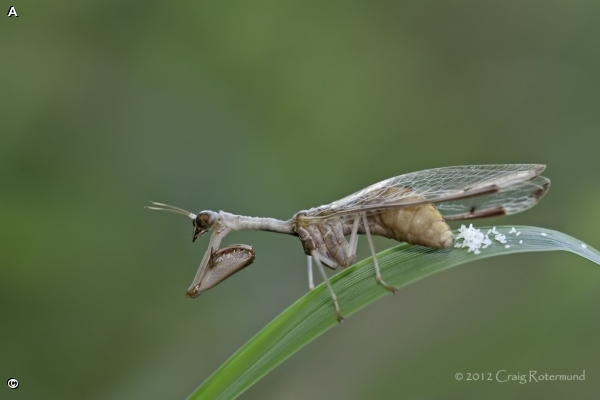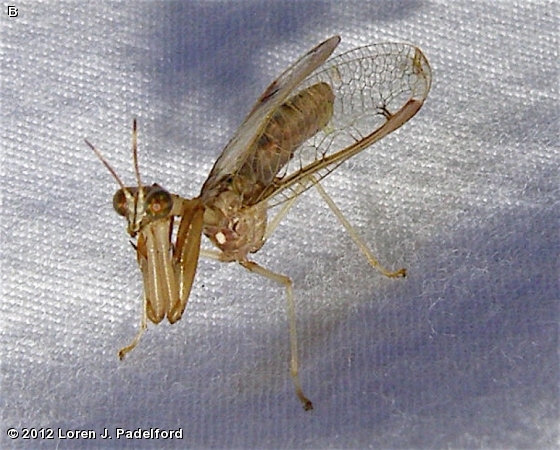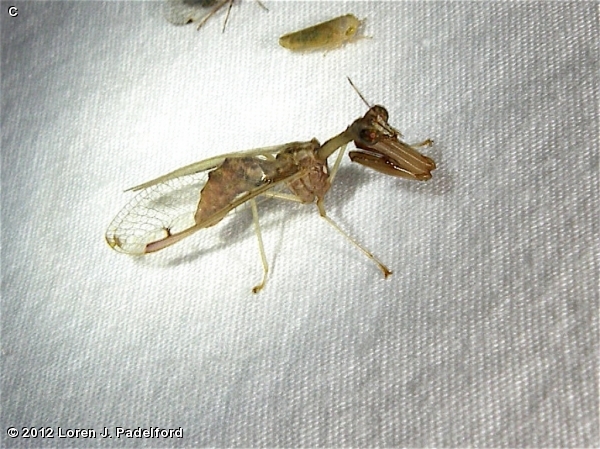
Dicromantispa interrupta
MANTIDFLIES (Mantispidae)
Description
This Mantidfly is about one inch long. However, size varies depending on the amount of food the larva ate. The overall color is tan. The head is small and the eyes are large and dark. The “neck” is elongated, and the abdomen is bulbous. The front legs are enlarged and modified for catching prey which consists of smaller insects. The wings are long with white netted veins and dark brown interrupted lines on the ends.
Occurrence
The frequency of occurrence is not known. It is considered to be relatively rare in its range, so an observer would be lucky to see one. The individuals shown here were found at Neale Woods in mid-August 2012 and early September 2012. The Mantidfly found in September was attracted to artificial lights.
Comments
Other names for this species are Mantidflies and Mantid Lacewings. The scientific name was formerly Mantispa interrupta. The larvae develop in egg sacs of hunting spiders. The larvae of many species climb onto a spider and wait for a chance to enter a newly formed egg case. The odds of success must be small since thousands of eggs are produced by a single mantidfly, but the insect is fairly rare. (“Insects Their Natural History and Diversity,” Stephen A. Marshall).
Disclaimer: The content of NatureSearch is provided by dedicated volunteer Naturalists of Fontenelle Forest who strive to provide the most accurate information available. Contributors of the images retain their copyrights. The point of contact for this page is: Babs Padelford.


